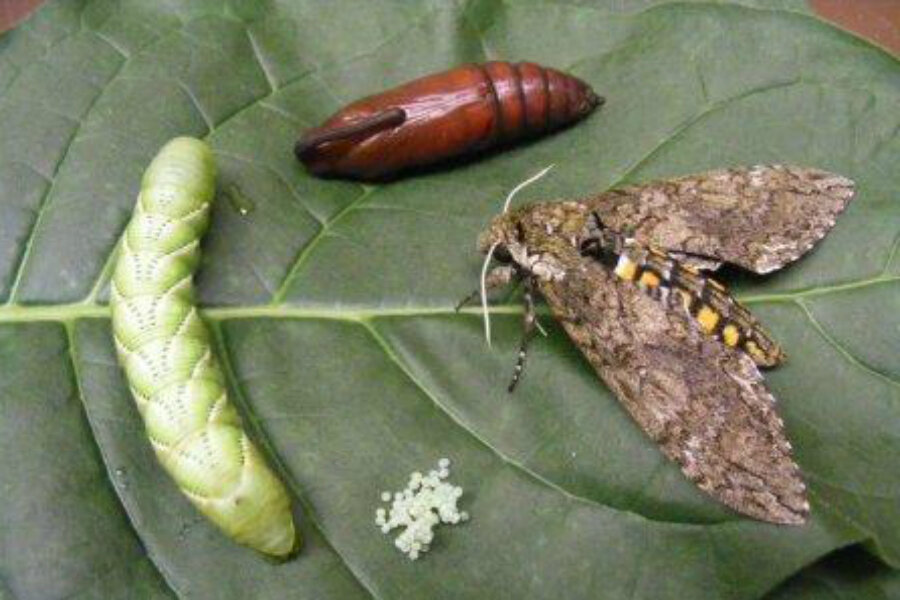Scientists sequence genome of very hungry caterpillar
Loading...
Researchers have sequenced the complete genome of the tobacco hornworm, a gluttonous caterpillar often used as a research subject for insect biologists. The sequenced genome, which was published Monday in the journal Insect Biochemistry and Molecular Biology, has been made publicly available through the National Agricultural Library.
According to researchers, this ravenous little creature’s genes could provide insights into human biology.
The larvae of the tobacco hornworm moth, Manduca sexta, are considered a pest throughout the Americas. They feast on the leaves of several important food crops, including tomatoes, peppers, potatoes, and eggplants. They even like tobacco leaves, oblivious to the nicotine which deters other insects.
But insect biologists love them. The caterpillars’ resistance to nicotine and other chemicals make them physiologically fascinating. And at 4 inches, they are large enough that scientists can easily take tissue samples.
That’s why Michael Kanost, a professor of biochemistry and molecular biophysics at Kansas State University, led a team of 114 researchers to sequence the insect’s genome. 50 research institutions from 11 countries played a role in the study.
"This project represents years of collaborative research across the world," said Dr. Kanost in a statement. "We wanted to provide these valuable data to scientists, and our hope is that this sequenced genome will stimulate new research in molecular studies of insects."
With a complete, open-source genetic map to work from, researchers can glean new insights about the insect’s biology and physiology. For his part, Kanost hopes to find links between blood-borne proteins and pathogen resistance.
"These proteins have similar functions in the immune system. By studying mechanisms and molecules, we can look at the similarities and differences between caterpillars and humans in how immunity functions and evolves," said Kanost.
Animal genome sequencing has provided new and strange answers for some biological questions. In 2014, researchers completed the genome of the cartilaginous elephant shark. In the process, they also identified gene families associated with skeletal formation and found that while sharks lacked certain immune cells, they exhibited robust immune responses and live long lives.
A year later, genetic profiling indicated that human tooth enamel originated some 400 million years ago – in fish scales. And in February, scientists found the genetic basis for our own asymmetrical bodies hidden in the genome of the humble pond snail.








